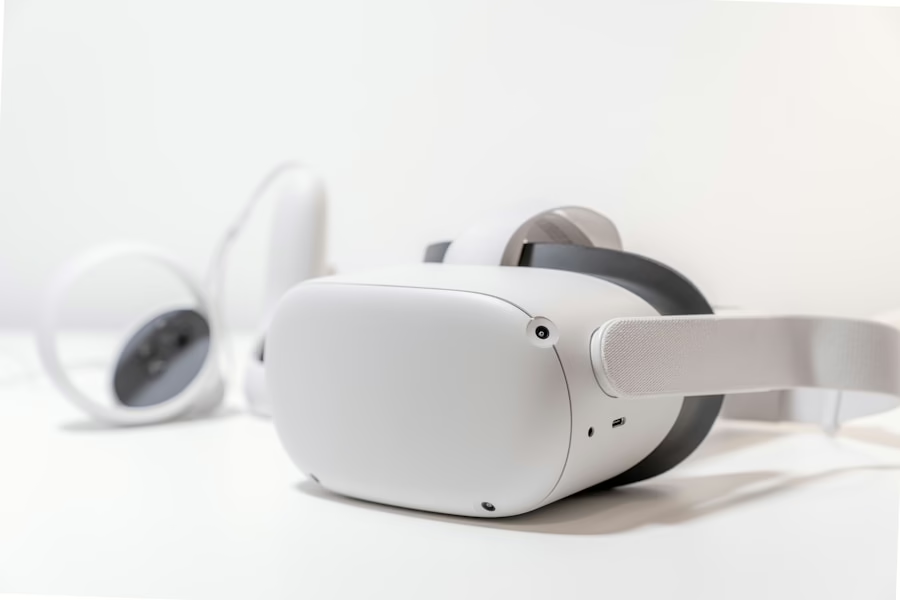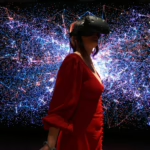In the rapidly evolving landscape of technology, several emerging trends are poised to revolutionize industries across the globe. These advancements not only enhance operational efficiency but also redefine how businesses interact with customers and manage resources. As organizations strive to remain competitive, understanding these trends becomes essential for strategic planning and innovation.
From artificial intelligence to biotechnology, the following technologies are at the forefront of this transformation, each offering unique capabilities that can reshape entire sectors. The integration of these technologies is not merely a trend; it represents a fundamental shift in how industries operate. Companies that embrace these innovations can gain a significant competitive edge, streamline processes, and improve customer satisfaction. As we delve into each of these emerging technologies, it becomes clear that their impact is profound and far-reaching, influencing everything from manufacturing to healthcare.
Artificial Intelligence and Machine Learning: Transforming Business Operations
Artificial Intelligence (AI) and Machine Learning (ML) are at the forefront of technological innovation, fundamentally altering business operations across various sectors. AI refers to the simulation of human intelligence in machines, enabling them to perform tasks that typically require human cognition, such as problem-solving and decision-making. Machine Learning, a subset of AI, involves algorithms that allow computers to learn from data and improve their performance over time without explicit programming.
Together, these technologies are streamlining processes, enhancing productivity, and driving data-driven decision-making. For instance, in the retail sector, AI-powered recommendation systems analyze customer behavior and preferences to suggest products tailored to individual shoppers. This not only enhances the shopping experience but also increases sales for businesses.
Similarly, in manufacturing, predictive maintenance powered by machine learning algorithms can forecast equipment failures before they occur, reducing downtime and maintenance costs. As organizations continue to harness the power of AI and ML, they are not only optimizing their operations but also creating new business models that were previously unimaginable.
Internet of Things (IoT): Revolutionizing Connectivity and Data Analysis
The Internet of Things (IoT) represents a network of interconnected devices that communicate and exchange data over the internet. This technology has revolutionized connectivity by enabling everyday objects—from household appliances to industrial machinery—to collect and share data in real-time. The implications of IoT are vast, as it allows for enhanced monitoring, automation, and data analysis across various industries.
In smart cities, IoT devices are used to manage traffic flow, monitor air quality, and optimize energy consumption. For example, smart traffic lights can adjust their timing based on real-time traffic conditions, reducing congestion and improving urban mobility. In agriculture, IoT sensors monitor soil moisture levels and weather conditions, allowing farmers to make informed decisions about irrigation and crop management. By leveraging IoT technology, businesses can gain valuable insights from data analytics, leading to improved efficiency and better resource management.
Blockchain Technology: Disrupting Traditional Financial Systems
Blockchain technology has emerged as a transformative force in the financial sector, offering a decentralized and secure method for recording transactions. At its core, blockchain is a distributed ledger that allows multiple parties to access and verify transactions without the need for a central authority. This transparency and security make blockchain particularly appealing for industries that require trust and accountability.
One of the most notable applications of blockchain is in cryptocurrency transactions, where it enables peer-to-peer exchanges without intermediaries like banks. However, its potential extends far beyond digital currencies. For instance, supply chain management can benefit from blockchain by providing an immutable record of product provenance, ensuring authenticity and reducing fraud.
Additionally, smart contracts—self-executing contracts with the terms directly written into code—can automate complex agreements in various sectors, from real estate to insurance. As blockchain technology continues to mature, it is set to disrupt traditional financial systems and create new opportunities for innovation.
3D Printing: Changing the Manufacturing Landscape
3D printing, or additive manufacturing, is revolutionizing the manufacturing landscape by enabling the creation of three-dimensional objects from digital models. This technology allows for rapid prototyping and production with unprecedented precision and customization. Unlike traditional manufacturing methods that often involve subtractive processes (removing material), 3D printing builds objects layer by layer, which can significantly reduce waste and production time.
In industries such as aerospace and healthcare, 3D printing is making waves by allowing for the production of complex components that were previously impossible to manufacture. For example, aerospace companies use 3D printing to create lightweight parts that enhance fuel efficiency while maintaining structural integrity. In healthcare, custom prosthetics and implants can be tailored to fit individual patients perfectly, improving comfort and functionality. As 3D printing technology advances, it is expected to further disrupt traditional manufacturing processes and enable more sustainable production practices.
Augmented Reality (AR) and Virtual Reality (VR): Enhancing Customer Experiences
Enhancing Customer Engagement in Retail
In the retail sector, AR is being used to enable customers to visualize products in their own space before making a purchase decision. For example, furniture retailers are using AR apps that allow customers to see how a piece of furniture would look in their home environment, enhancing the shopping experience and increasing customer satisfaction.
Simulation-Based Training with VR
VR is being utilized in training programs across sectors such as healthcare and aviation, where realistic simulations provide hands-on experience without real-world risks. This technology is enabling professionals to practice and perfect their skills in a safe and controlled environment.
The Future of Customer Experience
As AR and VR technologies continue to evolve, they promise to enhance customer engagement and create memorable experiences that drive brand loyalty. With their ability to provide immersive and interactive experiences, these technologies are poised to transform the way businesses interact with their customers.
Quantum Computing: Paving the Way for Advanced Data Processing
Quantum computing represents a paradigm shift in computational power by leveraging the principles of quantum mechanics to process information at unprecedented speeds. Unlike classical computers that use bits as the smallest unit of data (0s and 1s), quantum computers utilize qubits, which can exist in multiple states simultaneously. This capability allows quantum computers to solve complex problems much faster than traditional computers.
The potential applications of quantum computing are vast and varied. In fields such as cryptography, quantum computers could break existing encryption methods while also enabling new forms of secure communication. In pharmaceuticals, they could accelerate drug discovery by simulating molecular interactions at an atomic level. As research in quantum computing progresses, it holds the promise of solving problems that are currently beyond the reach of classical computing capabilities.
Biotechnology and Genetic Engineering: Shaping the Future of Healthcare and Agriculture
Biotechnology and genetic engineering are at the forefront of scientific innovation, offering groundbreaking solutions in healthcare and agriculture. Biotechnology involves using living organisms or biological systems to develop products or processes that improve human life. Genetic engineering takes this a step further by manipulating an organism’s DNA to achieve desired traits or outcomes.
In healthcare, biotechnology has led to significant advancements in personalized medicine, where treatments are tailored to an individual’s genetic makeup. For example, gene therapy aims to treat or prevent diseases by correcting defective genes responsible for illness. In agriculture, genetically modified organisms (GMOs) have been developed to enhance crop yields and resistance to pests or diseases.
These innovations not only address food security challenges but also contribute to sustainable farming practices. As biotechnology continues to evolve, it promises to play a crucial role in addressing some of the world’s most pressing challenges in health and food production.




